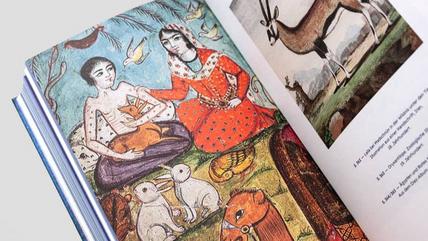The politics of Qur'an translation

In the Islamic year 1422 (2002), the King Fahd Qur'an Printing Complex in Medina, Saudi Arabia, celebrated the publication of the first ever (partial) translation of the Qur'an into Romani. This is the language of the Roma, arguably Europe's most marginalised ethnic group.
The translator, Muharem Serbezovski, is a colourful figure, and not necessarily the kind of person you would expect to cooperate with the Saudi religious establishment. Serbezovski is originally from Skopje, formerly the capital of the Yugoslav Republic of Macedonia and a centre for Muslim Roma.
A successful pop singer, he electrified Yugoslavian audiences with hits such as "I'm a g**** and I know how to love" ("Ciganin sam i umem da volim"). During the 1980s, he started writing novels and poems, seeking to raise the status of Romani, a language that is mostly used orally and has little cultural prestige, by giving it a literature of its own.
Serbezovski's language activism culminated in the most prestigious form of literature: the translation of scripture. This suited the Saudi King Fahd Complex, though it usually expects its Qur'an translators to have a more solid religious background.
The Saudi institution, which has been dedicated to printing Qur'an translations in dozens of languages since 1989, is extremely keen to expand its portfolio, with bonus points for languages in which nobody had translated the Qur'an before. If a good opportunity arises, the complex is quite willing to compromise, as long as the translator is Muslim.
A win-win scenario for translators and financiers
Romani is spoken by around 3.5 million people in different varieties in many countries across Europe, but only a small minority among them are practising Muslims. Of that minority, not all can easily understand the Balkan variety of Romani that Serbezovski uses.
Furthermore, literate Roma people usually read and write in the main language of the country or region they live in—Bosnian, Albanian or Czech, for instance. Hardly anyone actually needs a Romani translation to understand the Qur'an.
That the King Fahd Complex nevertheless pursued the translation project with Serbezovski makes one thing clear: Qur'an translations into minority languages are primarily a vehicle of language politics. Regardless of their utility, they have a symbolic function, demonstrating the publisher’s commitment to spreading Islam, while helping language activists to raise the prestige of their language and contribute to its standardisation.

Minority languages as a cultural asset
Saudi Arabia is not the only state investing in this kind of activity. The Libyan World Islamic Call Society was responsible for the first Qur'an translations into languages such as Wolof and Maltese.
In the past decade or so, Turkey has been especially active in Africa, where they focus on new target languages such as Chewa and Shona.
The Diyanet project "Hediyen Kur'an olsun!" (May my gift be a Qur’an!) had 42 languages in its portfolio, including Samoan, the language of the island state of Samoa to the east of Australia, home to a total of 48 Muslims at the time of the last census in 2001.

How the brain processes German and Arabic
Language develops in different areas of the brain. Researchers have been able to show that the way these are linked varies according to the respective native language – knowledge that could prove useful. By Katrin Ewert
All of this is due to the changing status of minority languages worldwide in recent decades—from nuisance to a cultural asset worthy of protection.
The European Charter for Regional or Minority Languages came into force in 1998, and we are currently in the first half of an International Decade of Indigenous Languages proclaimed by UNESCO (2022-2032).
A good example of this shift is Indonesia, a country that managed the impressive feat of completely replacing the colonial language, Dutch, as well as a jumble of local and regional languages, with a single, national language in anything related to education, media and official communication.
An authoritative Qur'an translation, published by the Indonesian government in the 1960s, played an important part in popularising the Indonesian language even among the conservative religious scholars.
This strategy worked so well that today, many of the hundreds of languages spoken in Indonesia are threatened by extinction. The dominance of Indonesian is so overwhleming that the government can now afford to celebrate linguistic diversity.
In 2011, the Indonesian Ministry of Religious Affairs started to produce Qur'an translations in more than two dozen so-called "regional languages": Makassar and Palembang, Tolaki and Mandar, Ternate and Bima. However, these regional languages have few or no readers left, and the ministry knows this: some of the translations had print runs of no more than 70 copies.
Hardly any translations into Celtic languages
There are similar trends in the European context. The Celtic languages, for example, were considered to be the idioms of illiterate peasants a hundred years ago. Anyone who aspired to success would speak English, rather than Welsh, Scots or Irish, and French, rather than Breton. Today, the image of Celtic languages has changed completely. They represent thousands of years of history, a rich mythology and deep roots in their regions.
But efforts to turn them into languages of Islam are proving difficult. Since the early 2000s, Muslim activists, local Muslim communities, and even Foras na Gaeilge, the official body responsible for the promotion of the Irish language in the Republic of Ireland and Northern Ireland, have repeatedly announce projects to have the Qur'an translated into one of the Celtic languages.
None of these announcements have led to tangible results so far. There are too few Muslims speaking these languages, and all of them are literate in French or English. Celtic languages may have high prestige, but they have little utility, especially for Muslim communities.

"Poetry in its true fullness"
Stefan Weidner has gathered pre-Islamic poems and translated them into German. His new book "The Arabic Divan" revisits these centuries-old works and explores how their verses serve as a vibrant predecessor to today's social media.
Translation efforts are often more successful when it comes to minority languages spoken in Muslim-majority contexts. For example, there are today at least four translations of the Qur'an into Tamazight, the language spoken by the North African Amazighs, formerly called Berbers.
Like the Celtic languages, Tamazight has long been marginalised or oppressed, especially in Algeria. But an Amazigh movement of cultural resistance started to take shape in the 1970s and 1980s out of which, between the 1990s and 2010s, the first Tamazight Qur'an translations emerged.
The King Fahd Complex also published a Tamazight Qur'an translation in cooperation with the Algerian Ministry of Religious Affairs. It drew heavy criticism because its author, Sī Mūḥand Ṭayyib, distanced himself from the Tamazight language activists' agenda.
Language activists wrote Tamazight in Latin script or even in Neo-Tifinagh, an alphabet developed from Tuareg script, and strove to develop a purist vocabulary with as little influence from Arabic as possible. The results of these efforts, however, are barely comprehensible for most Tamazight speakers.
Sī Mūḥand Ṭayyib deliberately ignored the demands of Amazighen activists, writing Tamazight in Arabic script and making liberal use of common Arabic loanwords. As a result, his translation was the only one that stood a chance of reaching at least a small readership.
Qur'an translations save languages
Qur'an translations into minority languages have become a battleground between two types of activists: those who fight for the language and those who want to promote Islam. It is a battle between language ideology and pragmatism. But it doesn't necessarily have to lead to conflict.
For example, Dakwah Corner Bookstore (DCB), a multilingual missionary publisher from Malaysia, is currently working on an ambitious project to produce a Qur'an translation into Rohingya, the language of a Muslim minority from Myanmar that has been subject to intense persecution.
Although DCB's primary purpose is the spread of Islam, they devoted considerable resources to developing a translation method for a language that, due to a history of oppression, lacks a literary tradition, a refined dictionary and tools for digital writing and typesetting.
It is through such efforts that Qur'an translations can contribute to keeping a language alive, or even allowing it to thrive again.
This article is an edited translation of the German original.
© Qantara.de
